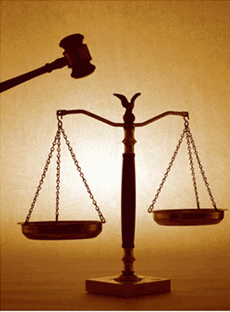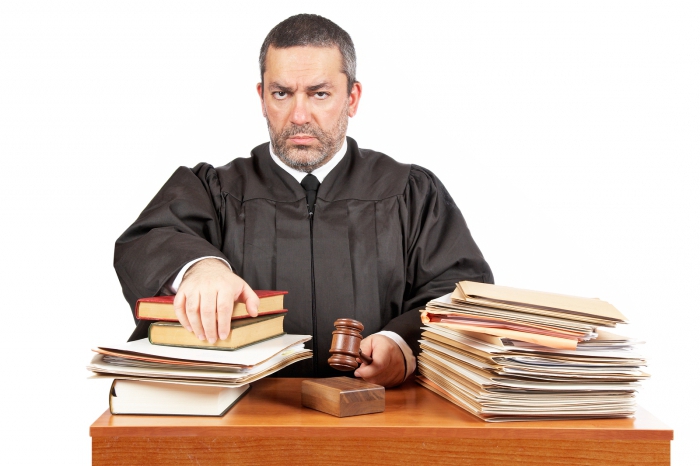Any citizen who has suffered any damage is entitled to compensation for damage. Compensation can be requested due to deficiencies in the goods, accident, poorly provided services, etc. In some cases, the culprit may be required to pay the victim compensation in a larger amount than the size of the losses. But how should you fight for your rights?

General concept
It will be necessary to indemnify in case of damage to property or in case of damage to material assets. In life, such situations, unfortunately, happen quite often. Compensation for material harm is made in the manner that is regulated in detail by civil law.
The need to compensate for the damage may arise in the process of labor relations (for example, when an employee spoils the property of the employer), in everyday life (flooding of a neighboring apartment), in case of an accident, civil law relations, etc.
Damage can be compensated in the following order:
- voluntarily;
- based on a court decision (compulsory);
- within the responsibility of the subordinate (in labor relations).
Refund Methods
The best option, of course, is voluntary compensation for the damage caused. In this case, the problem will be solved as soon as possible without the involvement of third parties and government bodies.
However, more often than not, redress takes place through the courts. The parties, as a rule, determine the amount of compensation in different ways, or the violator simply does not have the means to cover the damage to the victim. If a person refuses to voluntarily solve the problem, then they will have to resolve the conflict in court.
As a result of the consideration of the trial, the victim has the authority to demand from the culprit to recover the cost of damaged property, pay for treatment, return things in kind (in other words, replace), etc.

Compensation for damage in an accident
The victim in a traffic accident has the right to compensation for damage caused. The situation is greatly simplified if you have a policy for compulsory motor liability insurance. When determining the amount of damage during an accident, it is first worthwhile to evaluate the repair of the car. That is, it is necessary to determine the market price of materials and work that will be required to bring the machine into proper condition.
Compensation Procedure
In order to receive damages in case of an accident, make sure that you have all the necessary papers from the traffic police about the incident. These include a certificate of an accident, a copy of the protocol on the administrative violation, a decision to refuse to hold accountable or to initiate proceedings against the offender. You should also have insurance accident notification with you, it is often filled out directly at the scene.
To receive damages under compulsory motor third-party liability insurance, you should find out information about the policy of the perpetrator of the accident: his number, date of issue, contact details and the name of the insurance company that issued it.
Remember that you can compensate for CTP damage only if you inform the insurance company of the offender about the incident. To do this, you should call and give information about the culprit of the accident, get the number of your case for payment of compensation. Next, send the accident notification to the insurance company by fax or send a copy of the document by mail.

Damage assessment
To contact the evaluators, you will be required to:
- passport;
- Title
- power of attorney for car management;
- certificate from the traffic police indicating damage and participants in the accident;
- certificate of registration of transport.
The following is an independent evaluation agreement. You must be provided with one of its copies. Together with the evaluator decide when the inspection will be carried out. The insurance company of the culprit, the offender himself, must be notified of this event in at least 3 working days. When the assessment is carried out, take a document on its results, the act of acceptance and transfer and save these papers.
Without communication with the insurance company, the culprit of the accident will not be possible to recover damages under compulsory motor third-party liability insurance. To this company you send:
- notice and certificate of accident;
- a statement of compensation for damage in an accident;
- copies of the protocol on the offense, the decision on bringing to administrative responsibility or refusal to do so (issued in the traffic police);
- a copy of your passport;
- copies of papers on the vehicle;
- checks for payment of expenses for sending documents by mail;
- a copy of the notice of the inspection;
- damage assessment report;
- an agreement to conduct an assessment, an act of acceptance, receipt and receipt of payment for these services.
One month after the insurance company accepts a package of all these documents, file an application with a request for a copy of the act of the insured event. In it indicate in what amount you require compensation for property damage.
Litigation
Making damages through the courts will be a little more difficult. First you need to prepare a pre-trial claim and transfer it to the offender. If he refuses to pay damages, he will have to contact the court. At the same time, insurance companies are very reluctant to say goodbye to money. Therefore, they try to underestimate the amount of damage caused, or even refuse to indemnify it at all, do not provide access to documents on a traffic accident.
In this case, you will have to go to court to protect your interests. To do this, a statement of claim for damages. And you need to apply for an independent assessment. In some cases, the offender's insurance company may be involved as a co-defendant. Litigation may be delayed, but in such a case the likelihood of indemnification very high.
Filing a lawsuit
Not only the victim of an accident can sue, but also any citizen who has suffered damage. The Civil Code of the Russian Federation guarantees every person the right to appeal to court. Therefore, if you believe that your rights have truly been violated, feel free to file a claim for damages. Moreover, the lawsuit can be filed not only against citizens, but also against institutions, organizations, public associations, etc. It is also worth noting that you can claim compensation for moral damage while paying for material losses.
Collection of documents
Before filing a claim for damages, all necessary evidence must be collected. It is important to justify the size of the harm done. If there was property damage to a citizen, then evidence of witnesses, expert conclusions, photographs can be presented as evidence. If the entrepreneur suffered losses, then the businessman should submit documents that indicate a decrease in the company's economic turnover. If elimination costs are required damage it can be confirmed by estimates, cost calculations, etc.
In case of harm to the health or life of a citizen, documents on the costs of treatment and rehabilitation may serve as evidence base. As well as the conclusion of a medical examination, which indicates the severity of the damage, etc.

Statement of claim: drafting rules
To make a statement of claim for damages, it is necessary to fulfill a number of requirements:
1. First, the name of the court or name of the judge, information about the plaintiff, the defendant, the amount of the claim.
2.Next comes the reasoning section, where the applicant must refer to the legal norms and evidence in this case. It also describes what the unlawfulness of actions on the part of the defendant.
3. In the operative part, the citizen must clarify all the requirements that he makes to the defendant. At the end of the application, you must turn to the court with a request for a decision in relation to the opposite side.
4. The following is a list of attached documents.
Citizens file a claim for pecuniary damage in a court of general jurisdiction, and individual entrepreneurs and legal entities - in arbitration.
Arbitrage practice
Of course, each case is individual, but such disputes have similar features. The court is first of all obliged to establish the fact of the event, which caused material (and often moral) harm. In this case, the judge should be guided by documents on the recording of the event by certain state bodies (traffic police and traffic police in the event of an accident, the Ministry of Emergency Situations - in case of fires, the police - in case of damage to health or property, the management company - in case of flooding of the apartment, etc.), as well as indications witnesses.
Next, attention is drawn to the evidence of a causal relationship between the actions of the offender and the onset of negative consequences. For example, if an expert determined that the gulf was caused by the fault of the neighbors, then the responsibility will fall entirely on them.
Evidence base
Compensation for material damage is determined using specialized expert studies (trasological, fire-technical, forensic, technical, forensic examination) and written evidence.
The amount of damage, as well as additional requirements should be justified. The presence of lost profits and other expenses is determined. The plaintiff is very important to prove the amount of damage. This can be done with the help of an expert opinion, determine it yourself, etc. Another important point is the establishment of moral harm. It may include mental and moral suffering. In this case, compensation for damage will be possible provided that the plaintiff submits to the court, for example, such documents: confirmation of the failure of the transaction, medical certificates that indicate disability, and others.
If these requirements are met, the defendant will be awarded the payment of the maximum possible amount of compensation.

Non-pecuniary problems
Together with claims for compensation for material losses, the plaintiff has the power to demand compensation for non-pecuniary damage. And you need to be extremely attentive to this issue. Non-pecuniary damage may manifest itself in the fact that a citizen has suffered losses of a non-property nature. The court, of course, will oblige to compensate such damage in the event that it is established that you have been caused material damage. However, in some cases, citizens may receive compensation for damage caused by moral burdens and without causing them material damage.
The court will have to prove how your mental suffering manifests itself and how it relates to the actions of the defendant. For example, if you have been injured, you can write in a lawsuit about the discomfort you endured when you were in the hospital, etc.
Another important point is the amount of compensation. In a lawsuit, you, in principle, can indicate any amount of moral damage, but it’s far from the fact that the court recognizes exactly the amount you determined. The fact is that citizens quite often overstate or underestimate the extent of damage. Therefore, before setting the amount of compensation, objectively analyze the situation.

Afterword
In the statement of claim do not forget to indicate the amount of compensation, which, in your opinion, should be paid by the violator. At the same time, this amount must be confirmed by an appropriate expert opinion.If necessary, bring witnesses to the case and submit additional written evidence. You also have the right not only to redress, but also to compensation for non-pecuniary damage. But at the same time you will have to prove that you have undergone strong emotional and moral feelings. It is often more difficult to confirm moral suffering than material losses, because it is quite difficult to measure them. In this case, it is advisable to seek the help of a lawyer who can competently prove the degree of your experiences as a result of the actions of the violator.
If the judge establishes a causal link between the damage done to you and the guilty actions of the defendant, then the decision will undoubtedly be in your favor. It is worth noting that in some cases a person will be liable without establishing his guilt (for example, owners sources of increased danger etc.).